If you are a nurse who is tired of your body hurting daily, then it is time to look at the shoes you are wearing. Your shoes may be causing your feet to hurt, interfering with your ability to provide excellent patient care.
When your feet hurt, your knees and back will often hurt too because you change the way you move.
Instead of hurting each day and providing a lower level of care, you need great nursing shoes. Keep reading to learn the qualities you need to consider when choosing the best shoes for nurses this year.
Let’s jump right in!
What are nurses shoes
Nursing is one of the most physically demanding jobs in the world. The average nurse walks 4.5 miles in a 12-hour shift. Therefore, they must wear good shoes.
Not wearing shoes that properly support your feet can lead to all types of problems. Shoes that put pressure against your toes can cause nail problems. Your arches may collapse, which can lead to other health issues. You may experience more pain across your entire body and find it challenging to maintain good posture.
Therefore, you must wear good nursing shoes. In this chapter, we will define what makes good nursing shoes and talk about some common shoe materials.
What are nurses’ shoes?
As the name implies, nurses’ shoes are worn by nurses while on duty. They provide proper support to the foot, and most have a slightly raised heel to keep the body properly aligned. They are closed-toe and slip-resistant. They are often white and have other features helping them meet facility dress codes.
Let’s break that down a little further. First, nurses’ shoes provide proper foot support. In particular, they have good arch support. These shoes distribute pressure evenly across the foot. A nurses’ shoe with good arch support also helps to provide additional support and balance. Good arch support is essential so that your feet do not start hurting, which can cause issues further up the body, like knee and back pain.
Nurses’ shoes must be closed-toed because it is the government’s rule in many countries. Furthermore, it helps to ensure that you are less likely to injure your toes if you drop something. Furthermore, most have small heels, which helps keep the body in proper alignment.
by
The Med Life
Nursing shoes need to be lightweight. After all, nurses walk many miles each day. The average nurse takes about 9,000 steps in a single shift, so they do not want to pick up and put down heavy shoes with each step they take.
Nursing shoes must be easy to clean. After all, they are dealing with sick people every day. They do not want to take those illnesses home to their families, so they need a shoe that they can clean easily at the end of their shift. Furthermore, there may not be time to worry about what they are stepping on or in during an emergency.
If unsure what’s the best way to clean your nursing shoes, you can check our “How to wash shoes” post. Here you’ll get lots of tips and advice on how to make sure your shoes are clean. What’s more, not all shoes can be washed. Thus, you’d better know whether yours can go through a washing cycle. Otherwise, you might need to throw them in the bin. Hesitate no more and find out what’s the best way to clean your favorite nursing shoes!
Nursing shoes must have a closed heel. This is a safety measure designed to protect the foot. Furthermore, it helps protect the nurse from accidentally getting poked in the heel. The heel’s design should ensure that the shoe’s heel does not slip with each step that the nurse takes, or they will end up with painful blisters.
What makes a great nursing shoe?
Above all else, a great nursing shoe must be comfortable. That usually means that it is lightweight so that the shoe does not feel like the nurse is dragging along a ton of bricks with each step that they take. They must keep the body in good alignment, so they usually have decent arch support and a short or sloping heel. They must have a closed toe and heel to comply with governmental regulations and workplace dress codes.
The sole is an incredibly vital part of great nursing shoes. It must be slip-resistant so that the nurse does not easily fall. Since nurses often have to help patients transfer, they need to be sure that their feet will not slide out from underneath them. The sole should be thick enough that things do not easily poke through it and hit the nurse’s foot. Additionally, the entire shoe needs to be lightweight.
The shoe needs to be made of tough material while remaining breathable. Depending on what type of nursing the professional does, they may encounter all kinds of things on the ground. In some cases, they may also need to be able to put on and take off shoe covering quickly to care for patients in isolation. Buying breathable nursing shoes is essential for keeping the foot dry and comfortable throughout the shift, which helps to eliminate foot diseases.
While there is some leeway in some environments, most nursing shoes are white. Regardless, look for ones made from easy-to-clean materials. A nurse is a professional who must deal with doctors, patients, and families, so she must keep her appearance looking professional.
Why does choosing the right shoes for nurses matter?
A nurse must take good care of her health before taking good care of her patients. When nurses wear too-tight shoes, they can get ingrown toenails. If your feet feel jammed, then your toenails have no room to grow correctly.
Wearing shoes that do not fit properly can also lead to blisters. Imagine walking 4.5 miles daily on a foot with a blister on it. Yet, most nurses cannot stop and take care of the problem because they are too busy taking care of their patients. Therefore, the nurse must wear shoes that will not form blisters.
It can be rough to walk as many miles as most nurses walk without feeling heel pain. Yet, poor-fitting shoes can make you feel heel pain almost at the start of your shift. Heel pain can be a sign of a number of different conditions which can be exasperated when your shoes do not fit properly, including:
- Plantar fasciitis
- Bone spurs
- Tendonitis
- Bursitis
- Inflamed tendons
While nurses are more likely to develop athlete’s foot from not wearing shoes in common areas, it is possible to get athlete’s foot when you wear shoes that do not let your feet breathe properly. The fungus causing this disease thrives in dark and damp places, so nursing shoes can be the perfect breeding ground if you do not choose the right pair. If you are a nurse, your shoes must keep your feet dry throughout your shift. Often alternating pairs throughout your workweek can help keep the inside of your shoes dry, so you should have more than one pair of nurses’ shoes.
Nurses shoe materials
You can find shoes for nurses made from several different materials. Knowing the advantages and disadvantages of each material can help you choose the one meeting your needs as a nurse the best.
Cotton Canvas
Cotton canvas is exceptionally durable. At the same time, it allows your foot to breathe, which can be vital to keeping your feet healthy. It is hard to find anything lighter than a pair of cotton canvas nursing shoes. Yet, cotton shoes can be very durable as it is hard to cut through one. That durability comes from weaving thousands of cotton fibers together. Cotton is very absorbent, which can be a good and bad thing. Moisture will move away from your foot easier. Unfortunately, you will spend extra time keeping a pair of cotton canvas shoes clean. You can find cotton canvas nursing shoes in a variety of styles. They can be an excellent option for those just getting started because they are often one of the cheapest options.
Polyester
Polyester is a very flexible fabric often used to construct the uppers in nursing shoes. It is soft and supple so that it can feel great on the foot. This fabric absorbs moisture well, so your foot will stay dry. Unfortunately, polyester is not breathable, so your foot may get hot. There are at least three types of polyester commonly used to make nursing shoes, including:
- Polyurethane-coated fabrics – These shoes often have a cotton layer on the inside coated with a thin layer of this fabric. These shoes often look like leather, but they are softer and more flexible.
- Polyvinyl-chloride-coated fabrics – Options made with this fabric are particularly easy to clean. These shoes are water-resistant. They are often very inexpensive.
- Poromeric coated fabrics – This coating is applied in a thick layer over a textile or polymer base. They are flexible and easy to clean. They look like they are made of leather.
Rayon
By itself, rayon is weak, so choose nursing shoes where rayon has been combined with another material if this is your choice. Rayon can easily be cleaned, and it breathes very well. These shoes often have a silky appearance. Rayon is flammable, which may be a massive disadvantage in some nursing environments. Nurses usually love that this material is very soft, with a silky appearance. If your feet tend to swell, rayon has enough given that your feet will remain comfortable. By itself, it is not strong enough to make nursing shoe uppers, so be sure to select options where rayon is blended with another substance, such as cotton.
Leather
Leather shoes have many benefits. They are usually among the most durable option on the market. Many nurses find that leather shoes last longer than cheaper alternatives. They do an excellent job of letting your feet breathe. It is easy to polish a pair of leather shoes, so they look great at professional meetings and continuing education classes. Leather shoes tend to be heavier than some options, so you will want to look at the weight of the shoe before making a final decision. Leather shoes can be very hot, which may encourage your feet to sweat more. They are water-resistant.
Open Cell Foam
You will want to consider the type of foam used in nursing shoes that you are considering. Generally, there are two types. Polyurethane plastic is often used inside shoes, especially on the tongue and inside the heel. You may want to seek out shoes made with this type of foam because the stitching holds in place better. Therefore, the shoes are usually more durable. Open-cell foam is also great at helping stop wrinkles from forming in your shoes. Wrinkles can be a health hazard as they can cause your feet to begin to break down and make your feet feel uncomfortable.
Closed Cell Foam
The second type of foam used in nursing shoes is closed-cell foam. Manufacturers use this type of foam on the bottom of nursing shoes, especially around the arch support. Look for options where the foam is fastened well to the bottom of the shoes so that it does not come loose and leave you walking on a wrinkle. If you have issues with latex, then be very careful with these shoes, as latex is often used in combination with the foam.
Now that you know what nursing shoes are and some of the materials used in them, we are ready to dive deeper. In the next chapter, we will look at choosing nursing shoes, so be sure to carry on reading. I am so anxious to share my knowledge with you, so please keep reading as you want to choose the best nursing shoes possible.
How to choose the best shoes for nurses
If you have ever walked in shoes that did not fit properly or did not support your feet, then you know it can be a miserable experience.
Yet, nurses often have limits on what they can afford to pay for new nursing shoes, so they continue to wear shoes that do not fit them properly or are old every day. Many nurses fail to realize that it is hurting their bodies.
If you are a nurse, consider these characteristics to look for in a pair of nursing shoes before you ruin your health and career.
Tips on how to choose the best shoes for nurses
Keeping some simple tips in mind will help you stay comfortable throughout your shift. When you feel great, then you can deliver better patient care.
Once you get off work, you will have more energy to do the things you want to do. Your family will be thankful. After all, you will have the energy to be a successful parent because your body will not be hurting.
When it gets to be your time, you will also be thankful. You may discover that you get a better night’s sleep because your body is no longer hurting when you wear good nursing shoes during your work time.
Wearing good nursing shoes can be a life-changing experience. Therefore, you will want to keep these tips in mind.
Pick Non-slip sole
A pair of nurses’ shoes should have a non-slip sole, and it is part of the dress code at many facilities. The unique tread on the bottom of these shoes helps ensure that the nurse does not fall if liquid, oil, or another substance is on the floor.
This is perhaps the most essential feature to look for in nursing shoes. Slip-and-fall accidents account for about 15% of all workplace accidents. Across the general population, they are the most common reason for traumatic brain injuries, but you may also end up with broken bones. They are the most common injury reported in the workplace, and most of them can be prevented by wearing non-slip shoes.
Most shoes that are non-slip are also water-resistant, but I will have more details about that in a little bit. For now, understand that water-resistant and waterproof are two different things, and you want water-resistant shoes.
Select a Wide Box Toe
There are at least two reasons your nursing shoes should have a wide box toe. Stop for just a minute and hold out your hand flat. Now, imagine that your hand is your foot. Apply pressure to both sides of your fingers. If you apply enough pressure, your fingers will begin to hurt, and one finger may try to move on top of another. The same thing happens with each step if you wear shoes where the toe box is not big enough for your foot. Finally, imagine that you are applying that pressure every step you take. This exercise allows you to easily understand why you need nursing shoes with a wide box toe.
The second reason you need a wide box toe is to give your foot room to function as designed. If your foot does not have the space to move correctly, you will end up with hot spots, which can turn into even more significant issues, like bunions, corns, and blisters.
Consider Arch Support
You need nursing shoes with arch support designed to fit your foot properly. You need to know what type of foot you have to buy nursing shoes that will support your foot properly. You may have:
Flat feet
Your foot is collapsing inward when you walk, so you may be experiencing a great amount of pain without the right support.
Normal arch
Your foot is still functioning properly, so help support its movement by wearing good nursing shoes.
High arch
Your arch is raised, so you need a special nursing shoe to support the added height.
While only a doctor can properly diagnose what type of arch you have, you can generally tell by getting your foot wet and standing on a light-colored towel. If you can see most of your footprint, you have flat feet. If you can see most of your foot, except for the arch, you have normal feet. Alternatively, if most of the footprint is missing, then you have a high arch.
Wear Socks
You should always wear your nursing shoes with socks. You should try on your shoes with the same weight sock you usually wear to work. Your socks should offer additional support to your feet without causing them to feel cramped up.
Additionally, your socks should be antimicrobial. When bacteria grow on your feet, it can lead to foot odor issues. Bacteria not absorbed into your socks can also lead to your feet becoming sick from athlete’s foot, bunions, corns, and other problems.
Finally, your socks should help move moisture away from your foot and help to keep it cool. When your feet stay moist and dark, then your feet start to break down. Most nurses can tell you that walking with a cracked heel or a bunion makes their day miserable. Consider wearing thicker socks with adequate padding under your feet as they are more comfortable than thinner socks. They are also less likely to wrinkle.
Make sure you pick the right shoe size
Unbelievable as it may seem, many people suffer unnecessary pain due to the fact that they choose the wrong shoe size. When you pay a visit to the shoe shop, you are likely to try on several pairs before making up your mind. Thus, chances are you’ll make the right decision. However, these days, most of us buy shoes online, which might lead to wrongly selecting your shoe size.
When in doubt, you could significantly benefit from checking a shoe size chart. Manufacturers don’t always follow the same specifications. Besides, shoe sizes are different between countries. It is for this reason that ordering a new pair of shoes without checking a shoe size chart can lead to getting the wrong pair.
Alternate Your Footwear
If you wear the same pair of nursing shoes every shift, then you are setting yourself up for problems to occur eventually. When you wear the same shoes every day, you are putting the same amount of pressure on the same body parts with every step you take. Rotating your nursing shoes allows other muscles, tendons, and ligaments to carry some of the weight on certain days, so your entire foot becomes more robust and less prone to injuries.
If you wear nursing shoes with open-or-closed foam that provides cushioning to your foot, you need to allow at least 24 hours between each time you wear these shoes. It takes about that long for the foam to return to its original state and provide your foot with the cushioning that the manufacturer designed the shoe to provide. When you do not leave enough time between wearing your shoes, the shoe begins to break down.
In the case that you do different types of nursing on different days, you may find that different kinds of nursing shoes meet your needs the best. For example, if you work in a doctor’s office three days a week, you may need more stylish nursing shoes than the two days a week you work in the surgery ward, where you may stand in one spot for many hours.
Pick Easy-to-clean Nursing Shoes
As a nurse, you may encounter all types of substances that the general population rarely faces. Therefore, you need nursing shoes that are easy to clean. Your time off is precious, and you do not want to spend it polishing your shoes. You also need easy-to-clean shoes so that you are not tracking home germs and other harmful things to your family. Consider these options:
Leather
These shoes that are naturally waterproof can be cleaned with a damp cloth.
Faux leather
This inexpensive option wipes down with a damp cloth, but it may not be as durable as real leather.
Patent leather
The finish on these shoes means that they often do not pick up dirt in situations where other shoes get dirty.
I will return to this idea in a little bit when I recommend specific types of shoes.
Think About Breathability
The nursing shoes you wear need to allow your feet to breathe. Quickly removing moisture from your foot helps to keep it healthy. Additionally, it helps to eliminate foot odor, and you do not want patients holding their noses when you walk into their room.
You can think about it like sitting in a room with a ceiling fan. If the fan is not turning, the space may become stuffy, but the room becomes much more comfortable when you turn on the ceiling fan. Breathable shoes allow for air circulation. Therefore, air from outside your shoe is regularly exchanged with air inside your shoe. This helps to keep your feet cooler. Additionally, these shoes are ideal for removing moisture from your feet so that your feet stay healthier.
In the next section, I will have more to say about which shoes are the most breathable, so keep reading. Choosing options that remove moisture from around your foot and bring in fresh air helps to keep your foot healthy and more comfortable.
Opt for Water-resistant Nursing Shoes
Your nursing shoes must be water-resistant. The great news is that if your feet are often cold, choosing water-resistant shoes will help keep them warmer. These shoes help prevent moisture from outside the shoe from entering it, which can have harmful effects on your foot’s health.
It is vital to understand the difference between water-resistant and waterproof shoes. Waterproof shoes will stop moisture from entering your shoe, but it will also prevent moisture from exiting the shoe as your foot sweats. Meanwhile, water-resistant shoes still allow some moisture to pass through in both directions, so your foot will stay healthier and be more comfortable.
Replace Your Shoes
Many nurses are hesitant to replace their shoes because good nursing shoes can be expensive. While I get that, shoes have a limited lifetime and will not correctly support your body when worn for too long. That can set up other health problems, like knee and back pain, that can cause you to be miserable and may even require you to take time off work.
At a minimum, you should replace your nursing shoes every 500 –to-700 kilometers or every 310-to-475 miles. That figure will occur much quicker than you think when you consider the average nurse walks 4.5 miles every shift. In particular, watch for:
- Tread wearing down excessively in one spot
- Shoe rocks or tips when it is on a flat surface
- Mid-sole wrinkles occurring inside the shoe
- Uppers show signs of uneven wear
- Stitches showing excessive wear or breaking
Nursing Shoe Examples
I have included a lot of advice on buying nursing shoes up to this point. This advice helps you understand how to evaluate any pair of nursing shoes. You may even want to make a checklist so that you can take it to the store with you or use it when shopping for nursing shoes online. Let’s look at some examples so that you can get a better idea of how to apply the advice to shoes you may want to consider buying. Keep in mind our focus is on evaluating the shoe and not the brand.
Best overall Nursing Shoes
The best overall nursing shoes are water-resistant and are breathable so that your foot stays healthy. They also have a non-slip tread so that you do not slip when you accidentally step in a puddle. Furthermore, the nursing shoes should be stain-resistant and made of fabric, like leather, that is durable. The arch support should be the right height and be in the right place to support your foot comfortably. Stay even more comfortable by choosing options with additional cushioning built into them. Of course, you must select a pair that meets your facility’s dress code, which often means you are required to wear white shoes.
Best Budget Nursing Shoes
Canvas nursing shoes are often an excellent choice for budget-minded nurses and those just starting in this profession. These shoes are durable, so you may not have to replace your shoes as often. Just make sure that you buy shoes with the right type of arch support for your feet. Even if you are a young graduate, it is vital to start taking care of your feet by wearing shoes with great built-in arch support. Canvas shoes also offer the advantage of being breathable, so moisture moves away from your feet quickly, and you get good air circulation around your feet, helping to keep them more comfortable.
Best Nursing Shoes for Women
The best nursing shoes for women must be ultra-comfortable. That starts with a good arch support system that is right for your feet. It should also include a great non-slip sole so that you can stay on your feet throughout the shift. Choosing a pair of nursing shoes with extra cushioning in the footbed can help you feel like you are walking on air instead of the hard floors of a hospital, nursing home, or clinic. Choose a pair that has good support in the heels and a wide toe box so that your foot does not feel squashed.
Best Nursing Shoes for Men
The best nursing shoes for men are lightweight. After all, no one wants to wear heavy shoes throughout their workday. At the same time, men’s nursing shoes must be durable, so consider leather and other premium materials. Look for options with a wide toe box so that your foot does not feel squashed each time you take a step. Look for options with proper arch support designed for your foot type. Buying stain-resistant choices mean you will spend less time cleaning and polishing your work shoes.
Best Nursing Shoes for Support
You need your nursing shoes to offer you proper support to keep your body in proper alignment throughout your working day. Look for shoes with less than a 6 millimeter or 0.25-inch heel drop. If you see shoes advertised with motion stabilization or other special features, then be sure those features do not interfere with your foot’s natural movement. While you want some cushioning, too much cushioning causes excessive foot movement. When you wear shoes with too much cushioning, you get less feedback from your feet, so a problem may be bigger before you discover it. Additionally, choose shoes weighing less than 10 ounces.
Best Nursing Shoes for Nurses with Plantar Fasciitis
The most essential factor in buying shoes if you are a nurse with plantar fasciitis is to find a shoe with proper arch support directly under your arch. The arch support’s design should stop you from overpronating and reduce tension on the fascia. The shoe should have a deep heel cup as it is essential to controlling pronation and supination. Choose options with excellent cushioning in the heel so that your foot is not hitting the ground as hard. Seek out shoes that have some flexibility without being floppy.
Best Shoes for Nurses with Arthritis
Since arthritis often leaves people with misformed toes, you must find a shoe with enough room in the toe box that does not rub with each step you take. Nurses with arthritis will also want to consider options that bend only in places where your foot naturally bends. Some studies suggest that the best shoes have rocker soles, so investigate this option that aids you in moving your foot forward naturally with each step you take. The shoe should be made from a stretchy material so that it will stretch to accommodate your foot’s shape.
Best Nursing Shoes for Standing All Day
by
Alessya RN
If you have a nursing job where you stand in one place most of the day, you know that buying the right shoes is essential because this can be harder on your feet than moving around. You must find a pair of shoes that give your heel and arch proper support. Wearing lightweight shoes will leave your feet more comfortable as long as the footbed of the shoe has enough cushioning that you do not feel like you are standing directly on the floor. Since you spend more time than average on your feet, ensure that the shoe has non-slip tread.
Best Shoes for Nursing Students
It can be a huge change to go from sitting at a desk in high school all day to running the floors of a hospital, so if you are a nursing student, you need proper footwear. Consider canvas shoes as they are breathable, helping to keep your feet dry and cool while being durable. Seek out options with proper arch support to help your foot not collapse under the new demands you are putting on it. Check your school’s dress code, but you may need white shoes. Make sure that whatever option you choose is easily cleanable. Some canvas shoes can be tossed in the washing machine, while others have unique treatments to prevent stains from occurring.
I have covered a lot of material in this chapter and provided you with buying criteria for different nursing scenarios. Now that you know the requirements, we will finish off with a look at the different styles of nursing shoes.
Types of shoes for nurses
Nurses are being asked to do more than ever, and wearing the wrong type of shoe makes the job even harder. As you learned in the last chapter, shoes that do not adequately support your body make other parts of your body, like your knees and back, hurt. Therefore, you must choose great shoes for nurses.
I have provided you with qualities to look for and given you specific recommendations on features to seek out for different types of nursing.
In this chapter, we will dive deeper into different styles of nursing shoes.
Hospital Shoes
Hospital shoes are an obvious choice for many nurses. Consider options with a wide toe box so that your toes have plenty of room to move. You will also want to choose an option with the right type of arch support in the correct place for your foot. Pick out options with extra ventilation so that air can easily reach your foot and moisture can move away from it easily. This shoe style has a non-slip sole, but be sure to select an option that has a thick enough sole to protect your foot while still being lightweight.
Many nurses report that they do not like shoes that tie because of the risk of them coming untied when they do not have time to stop and tie their shoes. Therefore, consider options that close using velcro closures.
Sneakers
Nurses often choose sneakers to wear to work. As with hospital shoes, make sure that the arch supports your foot type. One advantage of wearing sneakers is that they often have a lot of cushioning built into them, which can help your foot feel more comfortable. Check out types of sneakers with unique treatments to prevent them from becoming stained easily, and make sure that they are water-resistant. Of course, you need to ensure that they have no-skid tread on their soles.
While you will want to choose an option with some built-in cushioning, selecting a pair with too much cushioning can be problematic because it allows your foot to move too much, which can cause blisters. Avoid sneakers with special technology built into them that prevent the foot from moving naturally.
Slip-on Shoes
Slip-on nursing shoes can be a great option, assuming they fit correctly. Most facilities require closed-toe shoes and non-skid treads, so keep that in mind when buying slip-on shoes for nursing. You still need to find a pair of shoes with excellent arch support. A shoe with a flat bottom and a slight toe drop will keep your foot moving forward naturally. Especially if you have misformed toes, be sure that the toe box is wide enough for your foot. A shoe with a deep heel cup will stay on your foot better when running to tend to patient care.
Shoes that are not flat on the bottom can cause problems when worn in some nursing scenarios because they lead to more slip-and-fall accidents.
Clogs
A popular choice with many nurses is clogs. Ensure clogs you are considering fit the contour of your foot completely. Your clogs should have excellent arch support. Look for options made from breathable, water-resistant material. You will also want to select closed-toe options that have non-slip tread. Some clogs come to a narrower point, so ensure you find options with a wide toe box.
If arthritis or other problems have left your foot malformed, ensure that the clog fits your foot correctly. In some cases, clogs do not have any closure at the back, so you will want to check your workplace dress code if you are considering one of these options.
Nursing Flats
Flats can make an excellent option for nurses. Take a look at the sole to ensure that it will not slide easily. One of the reasons many nurses love flats is that they are easy to put on and take off. Be sure to choose a pair with enough structure to support your foot correctly. You only want the shoe to bend where your foot naturally bends in most cases. Choose shoes made of a durable fabric that you can easily clean. Additionally, think about how air will reach your foot and how moisture will move away from your foot.
All shoes should have proper arch support in the correct place for your foot, which can be hard to find in flats.
Dress Shoes
If you are a nursing administrator, you may need to wear dress shoes to work. Consider options with a flat bottom and no-skid sole as they will be easier to walk in throughout the day. In many cases, government rules or insurance policies require you to wear closed-toe shoes. As with all shoes, you should choose a pair with good arch support to support your foot in the right place. Think about options with lots of ventilation so that air can reach your foot easily and moisture does not get trapped inside the shoe’s footbed.
If you spend time in patient rooms or in areas where patient treatment occurs, consider options that do not have a heel. It can be very easy to get the heel caught and cause a slip-and-fall injury, which is the most common workplace injury.
Walking Shoes
Walking shoes with non-skid tread can be an excellent option for nurses. Ensure the shoe has a wide toe box so that your toes do not end up pinched together. Look for options with a deep heel cup, as it will keep your shoes from slipping up and down while you are moving through your workday. Choose an option that has some cushioning built into them. The cushioning should be firmly attached to the shoe’s sole so it does not come loose and wrinkle.
There is a happy medium between shoes that are too flat and shoes with enough slope between the heel and the toe. Shoes with a very minimal drop help move your foot forward naturally with each step. Avoid options with built-in technology that may stop your foot from moving forward naturally.
Platform Shoes
Vertically challenged nurses may want to wear flat platform shoes to work. These shoes make it easier for nurses to reach many things. You will want to opt for a pair with a non-skid sole and a closed toe. Since these shoes often push your foot forward, it is imperative to opt for choices with a wide toe box. People who have pronation issues often find these shoes easier to walk in because they often are more inflexible than other options on the market.
While you will want to avoid high-heel platform shoes, many people find it easier to walk in options where their heel is raised slightly.
Rocker-bottom Shoes
Rocker-bottom shoes can be a great option, especially for people who have foot problems. This shoe’s design helps roll the foot through the injured part naturally. Often these shoes have a thicker sole, which may help them be more durable. Choose options made from materials that breathe well so that you do not exasperate current foot problems. An additional benefit of wearing these shoes is that many people find it easier to maintain their normal gait.
Be cautious about the arch support in these shoes. While they can help in many ways, your feet still need excellent arch support, or you may experience even more foot issues.
I hope you now have a better idea of what to look for when buying shoes for nursing. We have discussed many types of nursing shoes, but all are designed to help nurses feel more comfortable throughout their long shifts.
You will want to select a lightweight pair made from a durable material that you can clean easily. We looked at how foam affects your shoes and how you can make your shoes more durable by switching them out regularly. I have also given you many other tips to help you buy the best nursing shoes.
Finally, we looked at the different styles of nursing shoes that you might want to add to your collection.
If you have any questions, ask, as I am always glad to provide feedback. If you have found this post helpful, share it with your friends. The next time you have some me time, take a look at our other great posts.
Conclusion
You should now know the importance of nursing shoes in the nurse uniform. We have taken a deep dive into the qualities to look for when buying nursing shoes and the materials manufacturers use to make them. Additionally, we have made specific recommendations on what shoes you should consider.
I have covered a lot of ground, so it is only natural to have questions. Please ask, and I will do my best to answer them.
I hope you have enjoyed our learning adventure. If so, consider sharing this post with your friends. I love to share my knowledge, so be sure to check out my other posts.


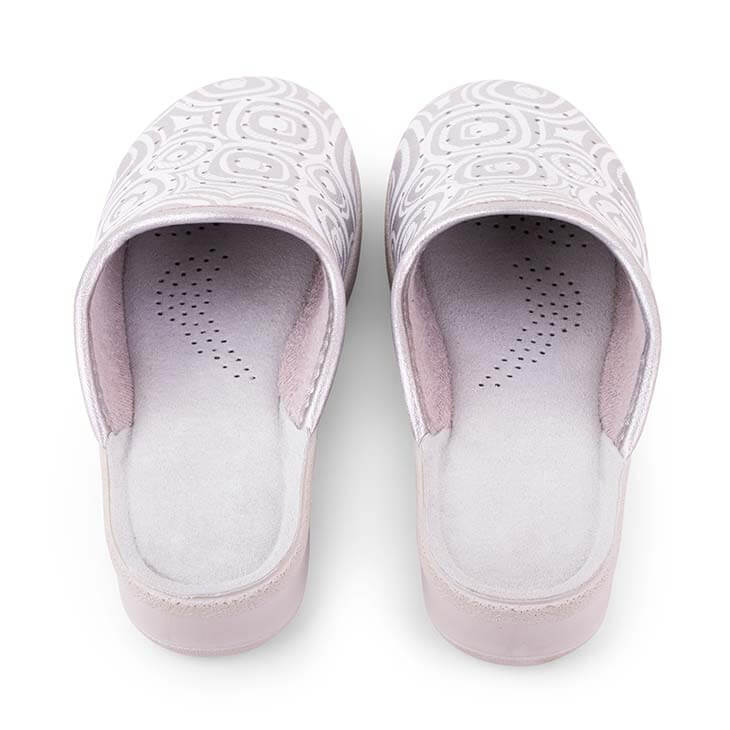


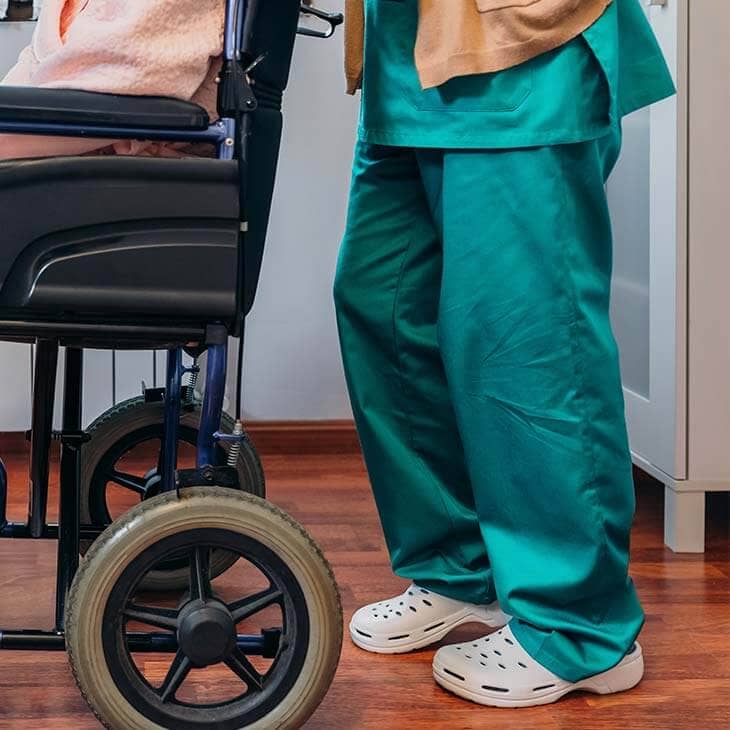
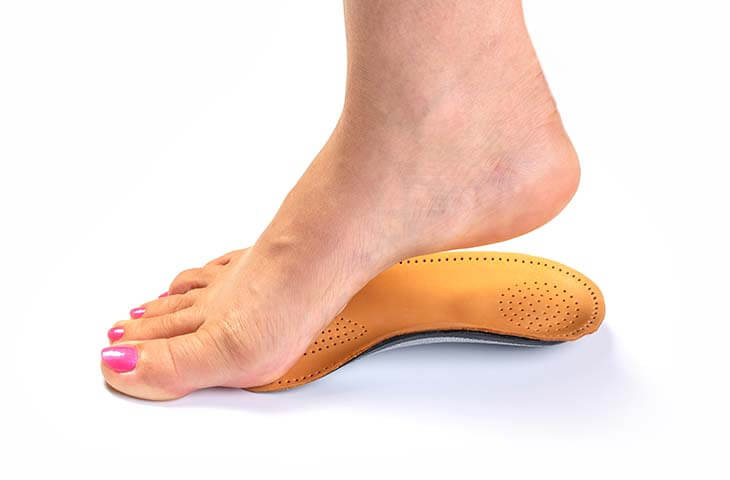
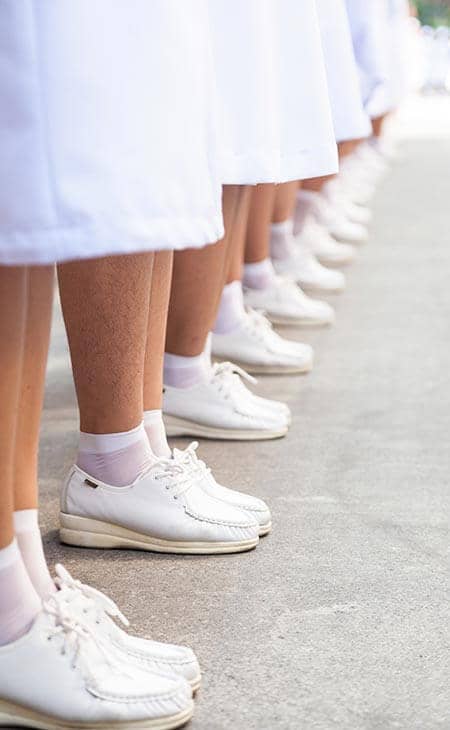
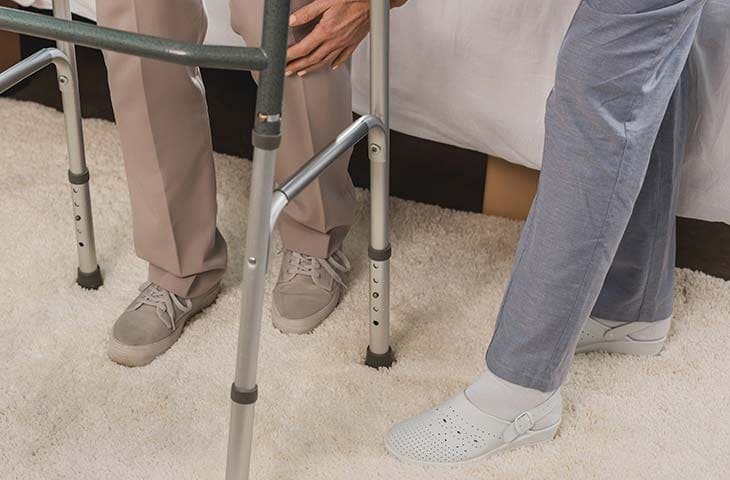
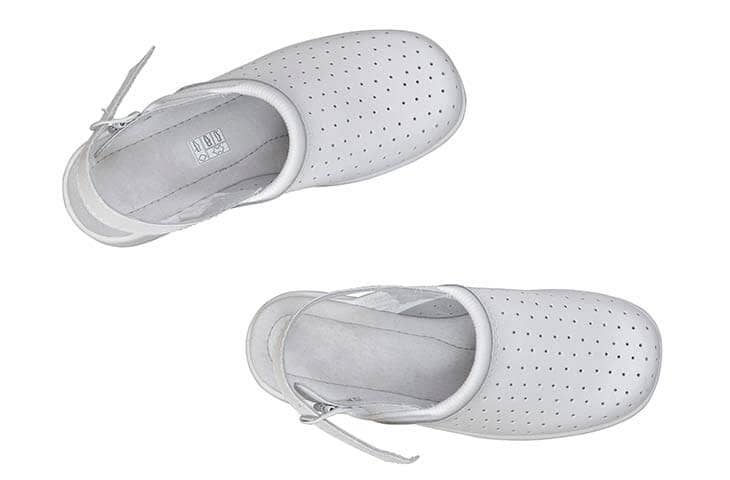
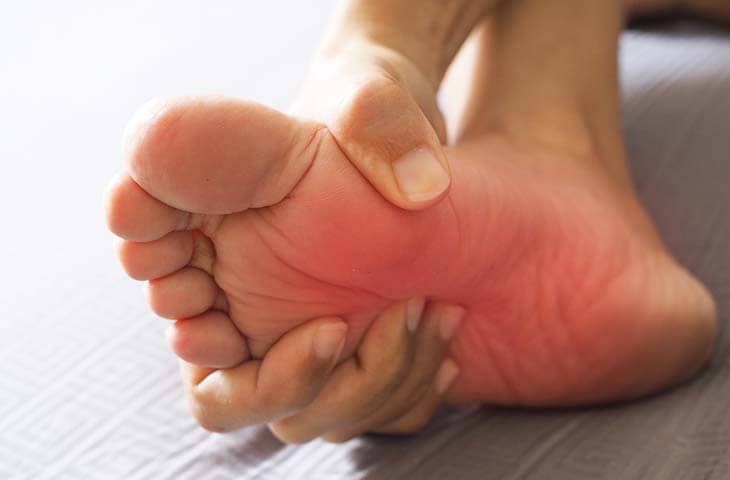

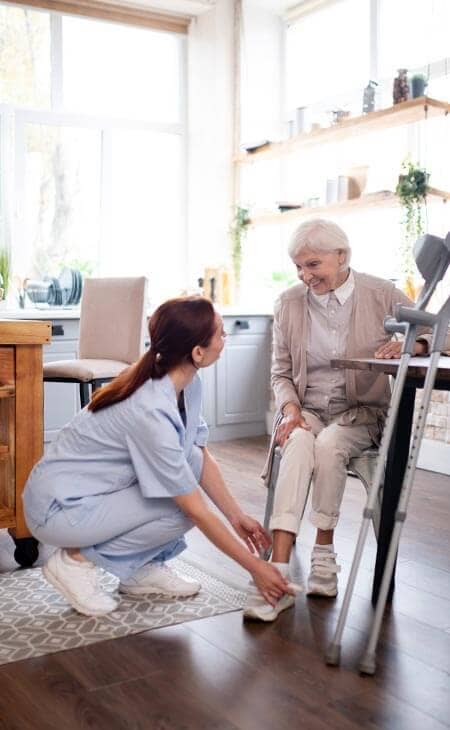
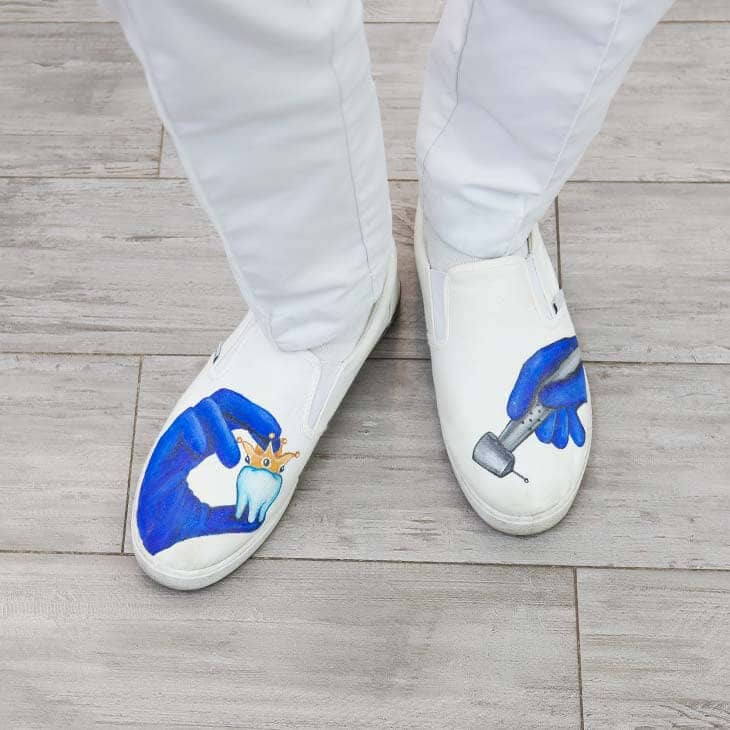

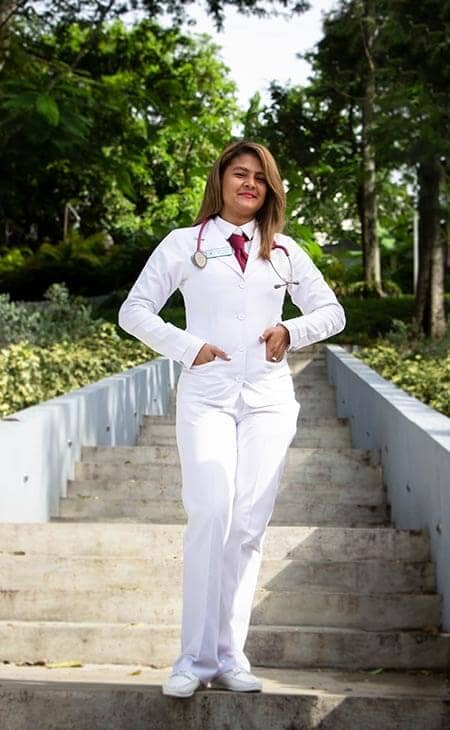
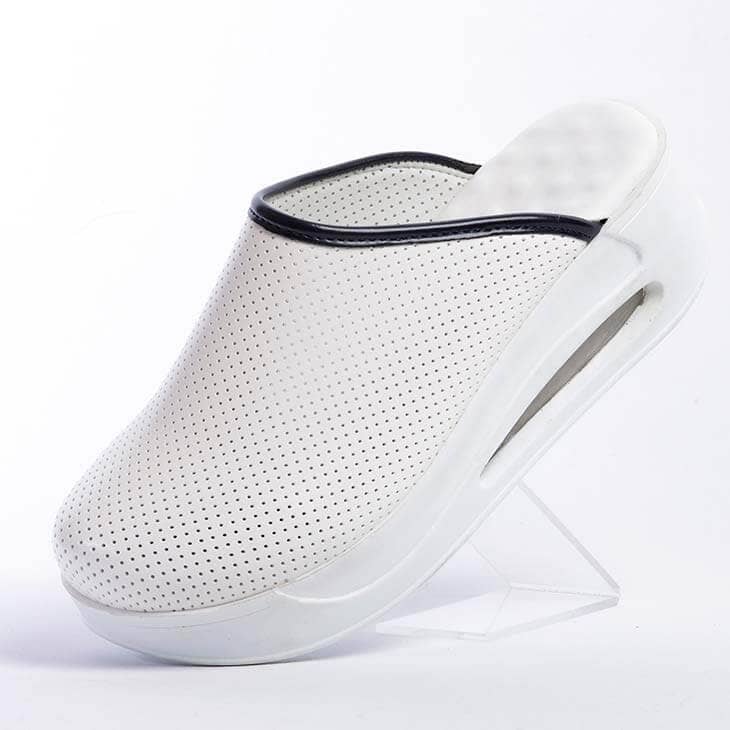
Great job Favrie! Just read your article on nursing shoes. It’s so important to choose shoes that are easy to clean and maintain, as they may come into contact with bodily fluids and other contaminants. There are many different styles of nursing shoes available, including sneakers, clogs, and Oxfords, so you should be able to find a pair that meets your needs and preferences. I’ve also written on this topic you can check on my blog.